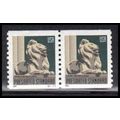Buckfast Abbey, Devon - Sanctuary - Salmon postcard c.1970s
- Condition : Used
- Dispatch : 2 Days
- Brand : None
- ID# : 128784910
- Quantity : 1 item
- Views : 247
- Location : United Kingdom

- Seller : justthebook (+1703)
- Barcode : None
- Start : Sat 07 Jun 2014 23:29:04 (BST)
- Close : Run Until Sold
- Remain : Run Until Sold
More Listings from This Seller view all
Seller's Description
- Postcard
- Picture / Image: The Sanctuary, Buckfast Abbey, Devon
- Publisher: J Salmon (1-48-03-13C)
- Postally used: no
- Stamp: n/a
- Postmark(s): n/a
- Sent to: n/a
- Notes / condition:
Please ask if you need any other information and I will do the best I can to answer.
Image may be low res for illustrative purposes - if you need a higher definition image then please contact me and I may be able to send one. No cards have been trimmed (unless stated).
------------------------------------------------
Postage & Packing:
Postage and packing charge should be showing for your location (contact if not sure).
No additional charges for more than one postcard. You can buy as many postcards from me as you like and you will just pay the fee above once. Please wait for combined invoice. (If buying postcards with other things such as books, please contact or wait for invoice before paying).
Payment Methods:
UK - PayPal, Cheque (from UK bank) or postal order
Outside UK: PayPal ONLY (unless otherwise stated) please. NO non-UK currency checks or money orders (sorry).
NOTE: All postcards are sent in brand new stiffened envelopes which I have bought for the task. These are specially made to protect postcards and you may be able to re-use them. In addition there are other costs to sending so the above charge is not just for the stamp!
I will give a full refund if you are not fully satisfied with the postcard.
----------------------------------------------
Text from the free encyclopedia WIKIPEDIA may appear below to give a little background information (internal links may not work) :
*************
Buckfast Abbey forms part of an active Benedictine monastery at Buckfast, near Buckfastleigh, Devon, England. Buckfast has been home to an abbey since 1018. The first Benedictine abbey was followed by a Savignac (later Cistercian) abbey constructed on the site of the current abbey in 1134. The monastery was surrendered for dissolution in 1539, with the monastic buildings stripped and left as ruins, before being finally demolished. The former abbey site was used as a quarry, and later became home to a Gothic mansion house.
In 1882 the site was purchased by a group of French Benedictine monks, who refounded a monastery on the site, dedicated to Saint Mary. New monastic buildings and a temporary church were constructed incorporating the existing Gothic house. Work on a new abbey church, which was constructed mostly on the footprint of the former Cistercian abbey, started in 1907. The church was consecrated in 1932 but not completed until 1938.
Buckfast was formally reinstated as an Abbey in 1902, and the first abbot of the new institution, Boniface Natter, was blessed in 1903. The abbey continues to operate as a Benedictine foundation today.
The first abbey at Buckfast was founded as a Benedictine monastery in 1018.[2] The abbey was believed to be founded by either Aethelweard (Aylward), Earldorman of Devon,[2] or King Cnut.[3] This first monastery was ""was small and unprosperous"", and it is unknown where exactly is was located.[4]
In 1134[2] or 1136,[4] the abbey was established in its current position; King Stephen having granted Buckfast to the French Abbot of Savigny. This second abbey was home to Savignac monks. In 1147 the Savignac congregation merged with the Cistercian, and the abbey thereby became a Cistercian monastery.[2] Following the conversion to the Cistercian Congregation, the abbey was rebuilt in stone.[5] Limited excavation work undertaken in 1882 revealed that the monastery was built to the standard plan for Cistercian monasteries.[3]
In medieval times the abbey became rich through fishing and trading in sheep wool, although the Black Death killed two abbots and many monks; by 1377 there were only fourteen monks at Buckfast.[citation needed]
By the 14th century Buckfast was one of the wealthiest Abbey's in the South-West of England. The abbey had come to own ""extensive sheep runs on Dartmoor, seventeen manors in central and south Devon, town houses in Exeter, fisheries on the Dart and the Avon, and a country house for the abbot at Kingsbridge[2]
By the 16th century, the abbey was in decline. Only 22 new monks were ordained between 1500 and 1539, and at the time of the abby's dissolution, there were only 10 monks in residence.
The abbey was surrendered for dissolution on 25 February 1539. The dissolution was received by William Petre and signed by all 10 monks of the abbey, who were granted pensions.[6][7]
Following dissolution, the abbey site and its lands were granted by the crown to Sir Thomas Dennis of Holcombe Burnell. Sir Thomas had the buildings stripped, and ""reduced them to ruins"".[2][8] The abbey site was the subsequently used as a stone quarry.[3]
In 1800, the site was purchased by local mill owner, Samuel Berry. Berry had the ruins demolished, constructing a Gothic style ""castellated Tudor"" mansion house, and a woollen mill on the site in 1806.[2][8] The Gothic house was constructed on the site of the abbey's former west cloister. The only pieces of the former abbey to escape demolition were some of the outer buildings - which were retained as farm buildings - and a tower from the former abbot's lodgings (the only part which remains to this day).[2]
In 1872 the site came into the possession of Dr. James Gale. Dr. Gale chose to sell the site in 1882 and, wishing to offer it for religious use, advertised the estate as ""a grand acquisition which could be restored to its original purpose"".[9]
In 1882 ""the whole site was purchased"" by French Benedictine monks, who had been exiled from fr:Abbaye Sainte-Marie de la Pierre-qui-Vire 1880.[8][10] On 28 October 1882, six Benedictine monks arrived at Buckfast having been exiled from France. The land had been leased by monks from the St. Augustine's Priory in Ramsgate[dubious ] and it was later bought for £4,700.[citation needed]
Most of Samuel Berry's house was remodeled and incorporated into new claustral ranges which were built in 1882.[2] A temporary church was constructed to the south of these new buildings, with the current abbey church constructed between 1907 and 1938, mostly on the footprint of the Cistercian Abbey (the east-end does not follow the original plan[10]).[2][8] The new abbey church was built in the ""Norman Transitional and Early English"" styles, to the designs of architect, Frederick Arthur Walters.[8] There were never more than six monks working on the project at any one time, although the whole community had repaired the ancient foundations up to ground level.[citation needed] Construction methods were primitive: wooden scaffolding was held together by ropes and no safety protection was worn by the monks. One monk fell 50 feet but survived; and three monks fell off a hoist without serious injury in 1931.[citation needed] Construction continued throughout World War I: some of the monks were of German nationality, but were not sent to an internment camp on condition that they remained confined to the Abbey grounds.[citation needed]
Buckfast was formally reinstated as an Abbey in 1902, and Boniface Natter - who died at sea in 1906, when the SS Sirio was shipwrecked - was blessed as the new abbot on 24 February 1903.[9][11] His travelling companion Anscar Vonier became the next abbot and pledged to fulfill Natter's dying wish, namely to rebuild the abbey.[11]
The abbey church was consecrated on 25 August 1932, but the building was not finished for several years: the last stone was laid in late 1937 and final works completed the following year.[12]
The only portion of the medieval monastery which survives is the ""much restored"", former abbot's tower, which dates from 14th or 15th century.[3] This was incorporated into the abbey's guesthouse, which was constructed during 1982 and 1994, when the abbey's precinct was rebuilt.[2] The abbey's former well, which was located in the crypt of the former abbey and which may have dated from Saxon times, was destroyed when the new abbey was built.[2]
type=printed
city/ region=buckfast
period=post-war (1945-present)
publisher=j salmon
postage condition=unposted
number of items=single
size=standard (140x89 mm)
Listing Information
| Listing Type | Gallery Listing |
| Listing ID# | 128784910 |
| Start Time | Sat 07 Jun 2014 23:29:04 (BST) |
| Close Time | Run Until Sold |
| Starting Bid | Fixed Price (no bidding) |
| Item Condition | Used |
| Bids | 0 |
| Views | 247 |
| Dispatch Time | 2 Days |
| Quantity | 1 |
| Location | United Kingdom |
| Auto Extend | No |




 for 1 item(s)
for 1 item(s)











